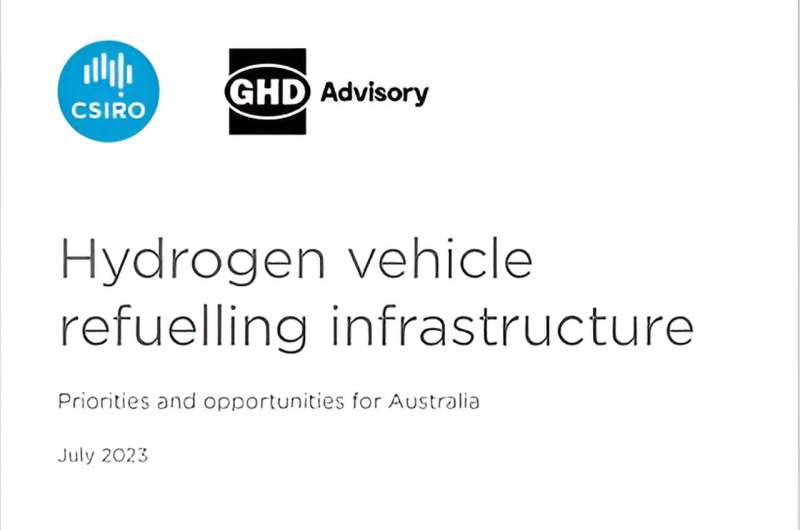
A new report released today by CSIRO, Australia’s national science agency, and GHD Advisory calls for Australia to focus on hydrogen-powered transport—alongside electric vehicles—or risk being left behind our international counterparts.
While battery electric vehicles will drive decarbonization of road transport in Australia, there are opportunities for hydrogen-powered vehicles to play a significant role with long-haul travel and freight transport.
This is because hydrogen-powered vehicles are quicker to refuel, have a greater range between refueling stops and can maximize their payload because they don’t need to carry large, heavy batteries required by electric vehicles.
The “Hydrogen vehicle refueling infrastructure” report sets out the opportunities and challenges for deploying refueling stations for hydrogen-powered road vehicles in Australia.
CSIRO’s chief scientist, Prof Bronwyn Fox, said Australia needs to urgently decarbonize its transport sector, which currently accounts for 18.6% of our greenhouse gas emissions, if the country is to meet its net zero commitments. Heavy vehicles are a key contributor to these emissions.
“While we know hydrogen will play a critical role, we also know that much of the key infrastructure for storing, moving and distributing hydrogen for use as a transport fuel—including pipelines, storage tanks and refueling stations—is yet to be built,” Prof. Fox said.
“That’s why this report is so important. It identifies priorities for action, including areas that would benefit from targeted research and innovation.”
The report compared the different hydrogen storage and dispensing options available, and evaluated refueling infrastructure options based on fuel demand and distance from the hydrogen source.
It found that while all Australian hydrogen refueling stations currently have onsite hydrogen production, we will need to move to centralized offsite production and distribution of hydrogen in order to refuel vehicles at scale.
Shawn Wolfe, Executive Advisor at GHD Advisory and lead author of the report, said Australia currently has only five hydrogen refueling stations in operation, with 20 planned or under construction.
“The pace of the transition to hydrogen-powered transport is moving a lot faster internationally than in Australia,” Wolfe said. “Companies like Daimler and Ampol are not hedging their bets—it’s a hydrogen and electric transport future.
“We need to get into lockstep or risk being left behind.”
Dr. Patrick Hartley, Leader of CSIRO’s Hydrogen Industry Mission, said research is happening at every point of the hydrogen supply chain, from hydrogen production through to storage, distribution and ultimately utilization technologies like fuel cells.
“Australia is unique in terms of our size and sparse distribution of population, so finding ways to make hydrogen available across the continent will be a key enabler,” Dr. Hartley said.
“This report will help regulators and industry stakeholders understand where they can best focus their activities and progress their plans to develop infrastructure for hydrogen-powered transport.”
More information:
Hydrogen vehicle refuelling infrastructure—priorities and opportunities for Australia. www.csiro.au/en/about/challeng … lling-Infrastructure
Citation:
New report identifies opportunities and challenges for Australia’s hydrogen-powered transport future (2023, August 21)
retrieved 21 August 2023
from https://techxplore.com/news/2023-08-opportunities-australia-hydrogen-powered-future.html
This document is subject to copyright. Apart from any fair dealing for the purpose of private study or research, no
part may be reproduced without the written permission. The content is provided for information purposes only.
Stay connected with us on social media platform for instant update click here to join our Twitter, & Facebook
We are now on Telegram. Click here to join our channel (@TechiUpdate) and stay updated with the latest Technology headlines.
For all the latest Technology News Click Here
